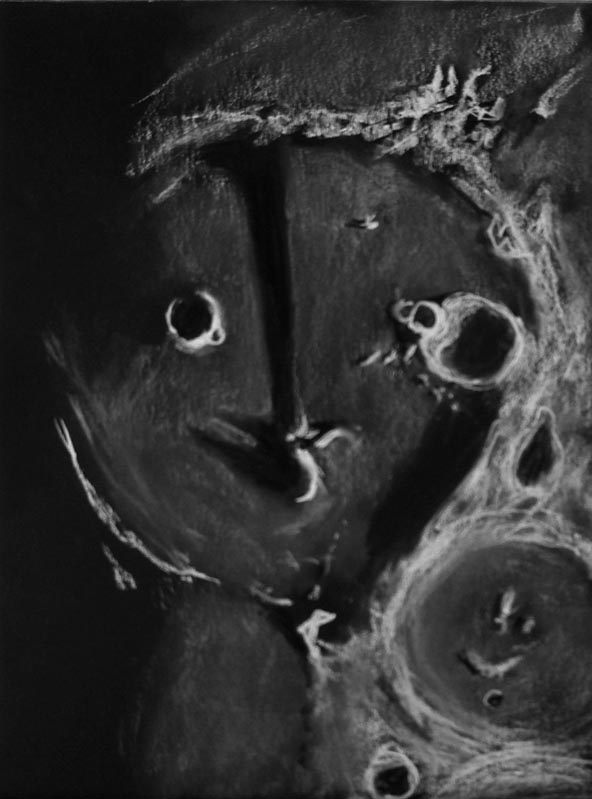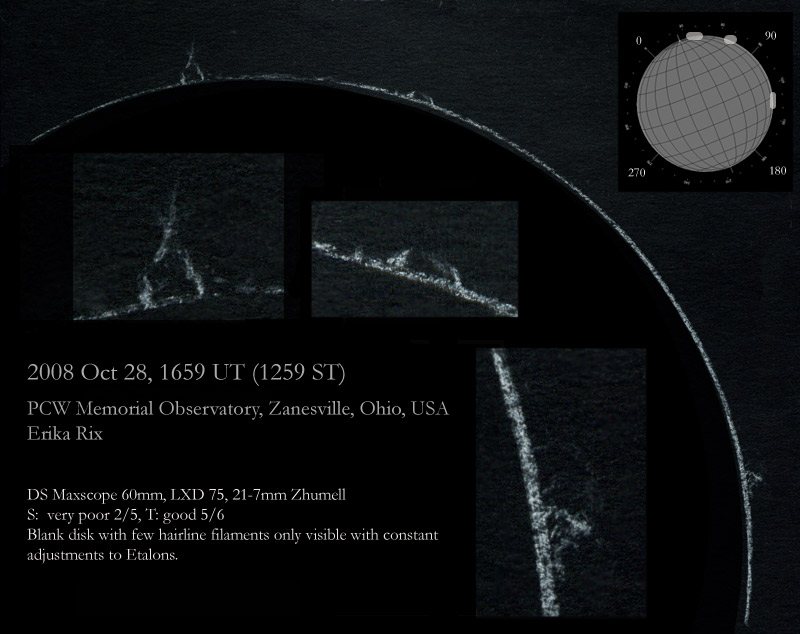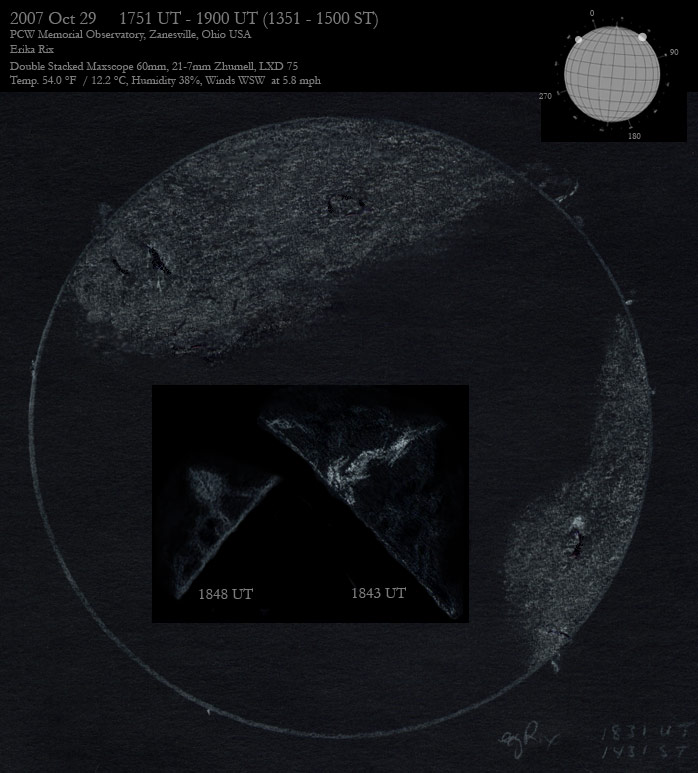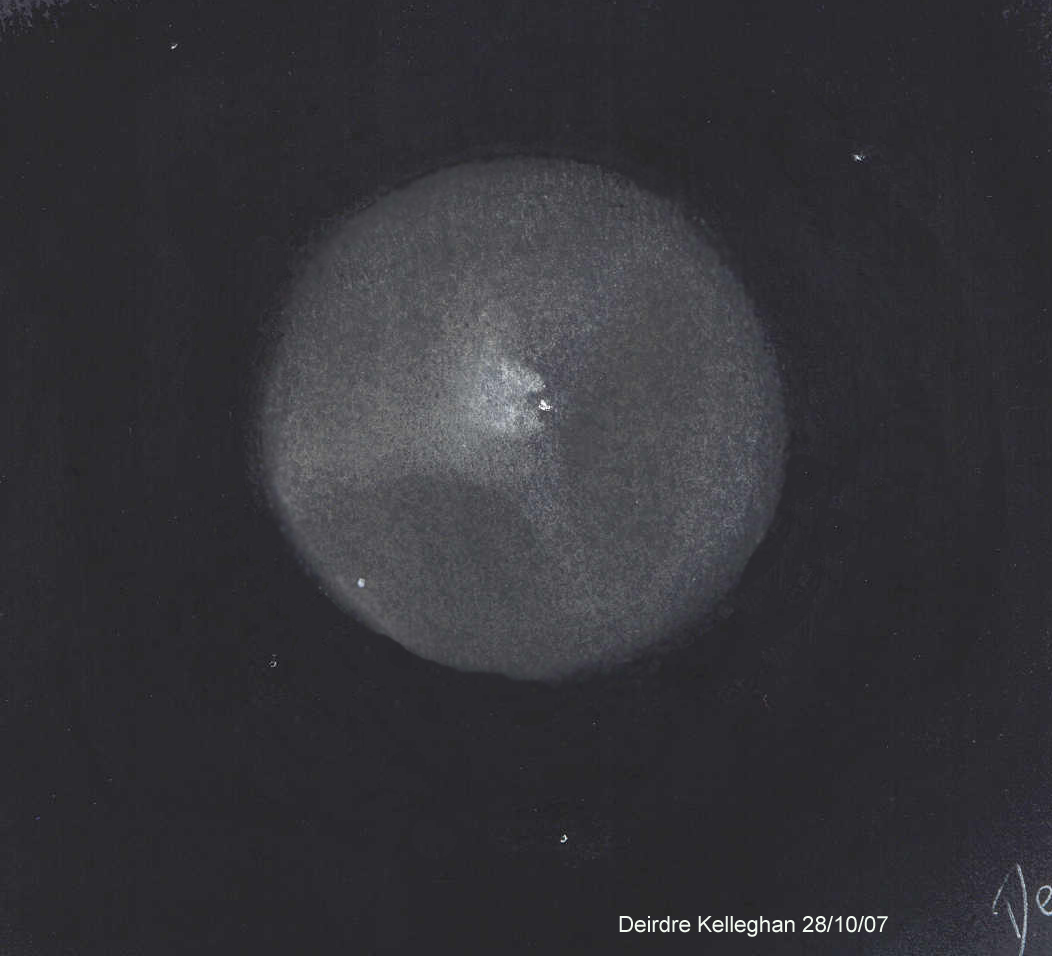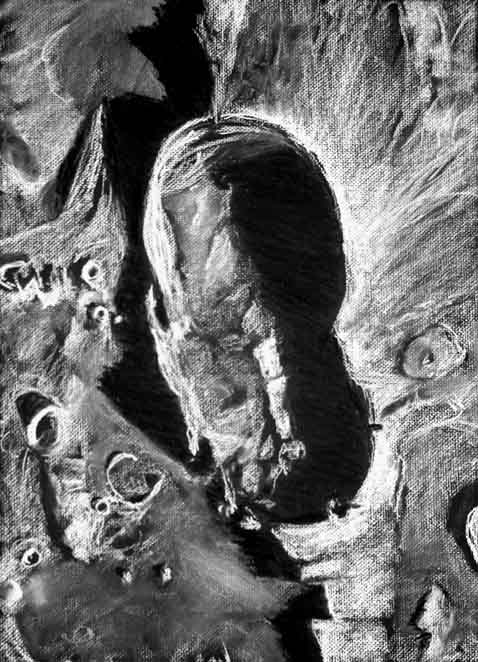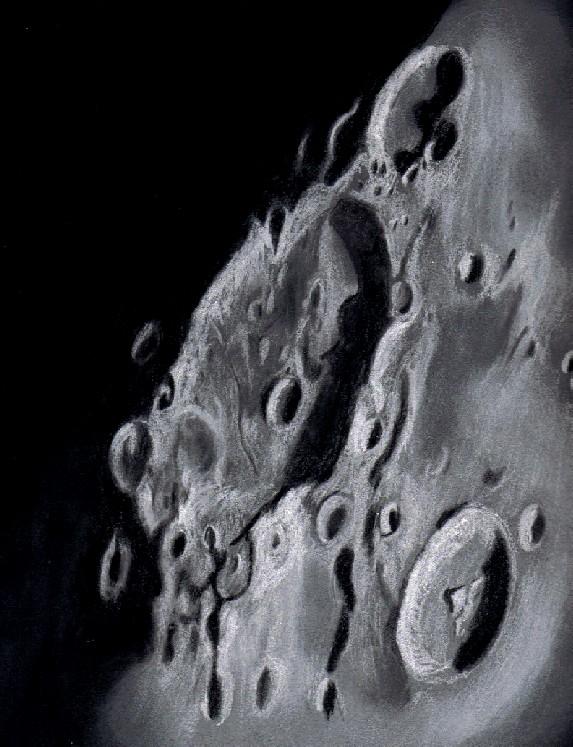The Straight Wall, Birt, and Thebit on the floor of ‘Ancient Thebit’
By Richard Handy
What struck me immediately was the scimitar shaped shadow of the Straight Wall. I had observed the Wall on many past ocassions and I guess I had never seen it so close to the terminator. The long shadow cast by the fault (the “absolute best example of a lunar fault” according to Chuck Wood) amply displayed the fact that Ancient Thebit must have subsided on it’s western half into the Nubium basin. Ancient Thebit is the large circular partial rim flooded with mare lavas which dominates the center of the sketch. It is not to be confused by the snowman shaped 57 km Upper Imbrium crater Thebit, which lies within it along with Birt
and the Straight Wall. I’m not totally sure about my interpretation, but I believe that Rima Birt is demarcated by the shadow line just immediately above Birt, the small double crater on the left of the Straight Wall. The crater at the lower right is Purbach with its scattering of low peaks and small craters on an otherwise lava flooded floor.
Here are the sketch details:
Subject: Rupes Recta, Birt, Thebit on the floor of “Ancient Thebit”.
Date: 8-31-06 Start time- 3:40 UT Ending time- 4:27 UT
Lunation: 8.31 days Phase 88.1 deg Colongitude: 8.6 deg
Libration in Latitude: +6 deg 48 min Libration in Longitude: -6 deg 43 min
Telescope: 12″ Meade SCT f/10
Binoviewer: W.O. Bino-P with 1.6X Nosepiece
Eyepieces: 20mm W.O. Plossls
Magnification: 244X
Sketch medium: White and black Conte’ Crayon on black Strathmore Artagain paper.
Sketch size: 9″ x 12″

